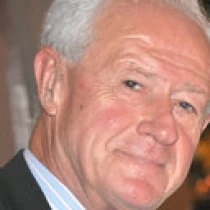Efficacy observation and prognostic analysis of sling exercise therapy combined with warm acupuncture moxibustion in the treatment of patients with rotator cuff injuries: A 6-week randomized controlled trial
Abstract
Objective: To evaluate the clinical efficacy, advantage and continuity of rotator cuff elasticity and shoulder joint function of sling exercise therapy(SET) combined with warm acupuncture moxibusion in the treatment of patients with rotator cuff injuries(RCI) using shear wave elastography(SWE). Method: Collecting patients who attended the outpatient clinic of the Department of Acupuncture and Rehabilitation of Hangzhou Hospital of Traditional Chinese Medicine from March 2022 to March 2023. Sixty patients with rotator cuff injuries were randomly divided into 30 cases each in the treatment group and the control group. In the control group, 1 case was dislodged due to traveling in the middle of the day, totaling 59 cases. Both groups were intervened with basic treatment of joint loosening. The control group was given warm acupuncture moxibustion(WAM) treatment, and the treatment group was combined with SET suspension training on the basis of the control group for 6 weeks.Visual analog score (VAS), shoulder joint active range of motion (SAROM), Young’s modulus (E) and rotator cuff quality of life index (RC-QOL) were used to evaluate the pain intensity, shoulder mobility, rotator cuff muscle and tendon elasticity, and quality of life of the patients before and after the treatment, and to compare the clinical efficacy of the two groups. The VAS was evaluated again at the end of the treatment for a follow-up of 3 months to observe the stability of the treatment effect. Results: VAS and E decreased and SAROM and RC-QOL increased in both groups after treatment compared with before treatment, and the differences were statistically significant (P<0.05).At the end of treatment, there were significant decreased in VAS and E increases in outreach SAROM and RC-QOL in the treatment group compared with the control group, and the differences between the two groups were statistically significant (P<0.05). In the treatment group, the range of adduction, internal rotation and external rotation SAROM was expanded, but the differences were not statistically significant compared with the control group (P>0.05).The clinical effective rate was 96.67% in the treatment group and 79.67% in the control group, and the difference was statisticall y different (P<0.05). At the follow-up 3 months after the end of treatment, the VAS of the treatment group was lower than the same group at the end of treatment. It was also lower than the control group. The differences were statistically significant (P<0.05). In contrast, the VAS of the control group did not see any significant changes compared with the same group, and the differences were not statistically significant (P>0.05). Conclusions: SET combined with WAM can effectively relieve pain, improve shoulder joint function, rotator cuff elasticity, and enhance the quality of life of patients with RCI. Compared with the treatment of WAM alone, the effect of the intervention of SET is more stable and long-lasting in terms of pain relief.Copyright (c) 2025 Feiyu chen

This work is licensed under a Creative Commons Attribution 4.0 International License.



